Virginia Beach, VA Pollen and Allergy Report for Summer 2023
Pollen Allergy Trends in Virginia Beach, VA
When is pollen lowest in Virginia Beach, VA?

February
Lowest month total PPM
Avg. PPM
When is pollen highest in Virginia Beach, VA?

April
Highest month total PPM
Avg. PPM
How does pollen in Virginia Beach, VA compare to Virginia?
Virginia Beach has a higher average PPM than the state of Virginia.
Virginia Beach yearly avg PPM:
Virginia yearly avg PPM:
How does pollen in Virginia Beach, VA compare to the USA?
Virginia Beach has a higher average PPM than the USA.
Virginia Beach yearly avg PPM:
USA yearly avg PPM:
Is pollen worse this year in Virginia Beach, VA?
Spring 2023 was worse than spring 2022.
Spring 2023 PPM:
Spring 2022 PPM:
Average PPM in Virginia Beach, VA
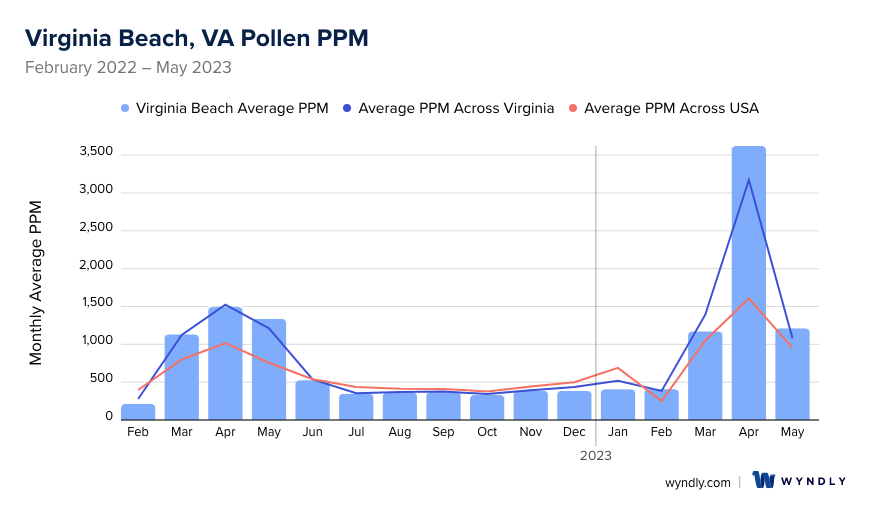
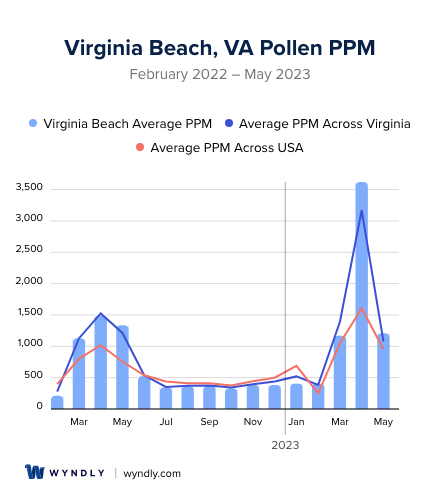
Virginia Beach, VA Pollen and Allergy Breakdown by Month
Grass
When is grass pollen highest in Virginia Beach, VA?
April has the highest grass pollen in Virginia Beach, VA with an average PPM of
When is grass pollen lowest in Virginia Beach, VA?
December has the lowest grass pollen in Virginia Beach, VA with an average PPM of
Tree
When is tree pollen highest in Virginia Beach, VA?
April has the highest tree pollen in Virginia Beach, VA with an average PPM of
When is tree pollen lowest in Virginia Beach, VA?
October has the lowest tree pollen in Virginia Beach, VA with an average PPM of
Weed
When is weed pollen highest in Virginia Beach, VA?
April has the highest weed pollen in Virginia Beach, VA with an average PPM of
When is weed pollen lowest in Virginia Beach, VA?
February has the lowest weed pollen in Virginia Beach, VA with an average PPM of
Virginia Beach, VA Pollen Monthly Breakdown by Pollen Type
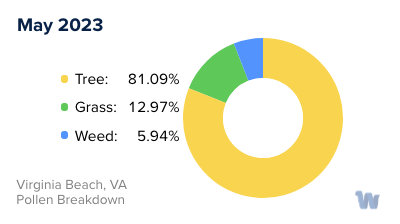
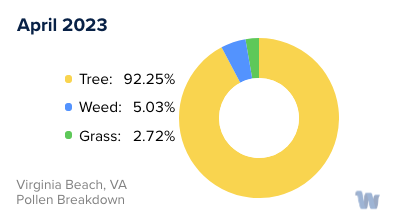
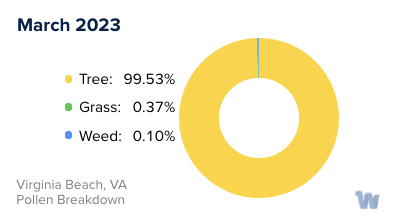
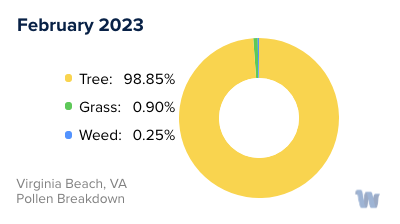
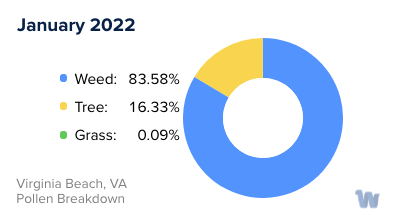
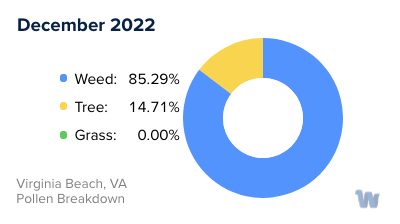
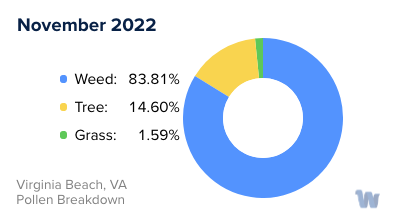
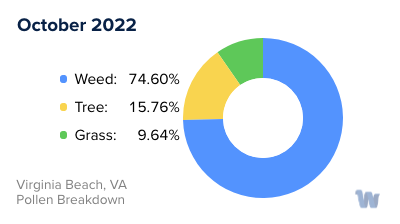
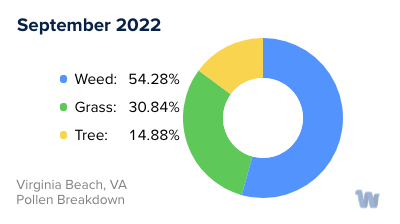
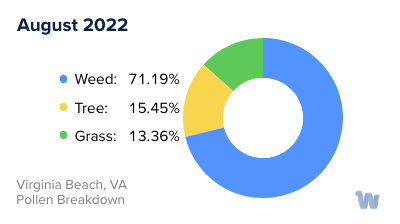
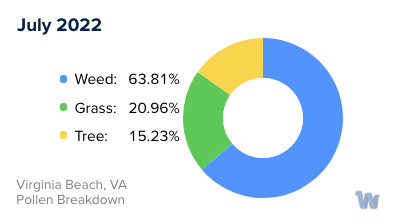
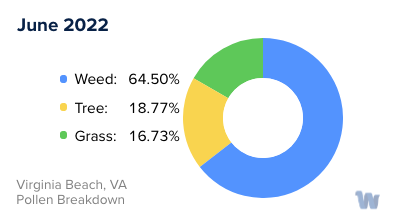
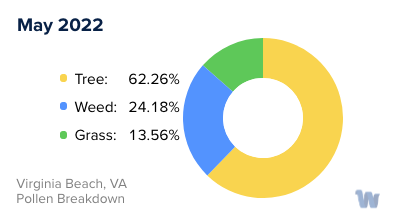
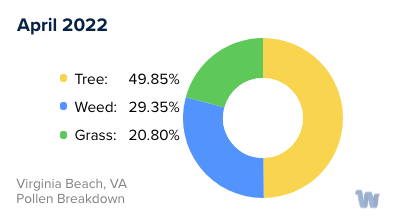
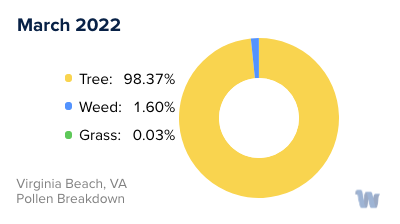
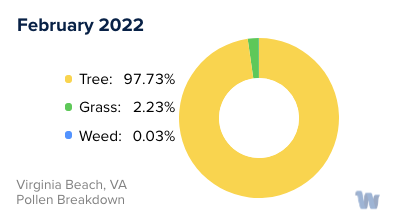
Pollen and Hay Fever in Virginia Beach, VA
In the delightful coastal city of Virginia Beach, Virginia, nature's beauty flourishes. However, for those susceptible to pollen allergies, this natural splendor may come with a few sniffles. Pollen allergies, commonly known as hay fever, are the body's response to airborne pollen grains from various plants. In Virginia Beach, these allergens are primarily from trees, grasses, and weeds.
The onset of spring in Virginia Beach brings a vibrant palette of blooming flowers and budding trees. While this is a sight to behold, it also marks the beginning of tree pollen season. From late February to June, trees such as oak, pine, and cedar release an abundance of pollen into the air. These tiny particles are often carried by the wind, and can easily find their way into sensitive noses and eyes.
As spring transitions into summer, grass pollen takes center stage. The city's lush lawns and grassy fields are sources of pollen from various grasses like Bermuda, fescue, and ryegrass. Grass pollen season generally runs from May through early July, and is characterized by a different type of pollen that is slightly larger and less airborne than tree pollen.
Lastly, as summer fades into the crisp autumn air, weed pollen season commences. From late August to the first frost, weeds such as ragweed, sagebrush, and pigweed release pollen. Ragweed, in particular, is a notorious culprit for hay fever in Virginia Beach.
In summary, Virginia Beach’s pollen seasons are characterized by tree pollen in the spring, grass pollen in the summer, and weed pollen in the fall. Understanding these cycles can help residents and visitors be more prepared for the changing seasons and the pollen they bring.

